34th Annual Salary Survey: Salary growth slows, tasks soar

As companies continue to search for the next generation of logistics management talent, the existing workforce is being asked to deliver more than ever before. While our survey respondents aren’t griping about the workload, they maintain that new challenges require more resources.
More than 500 qualified respondents to our “34th Annual Salary Survey” report that their salaries moved up only incrementally last year. However, they tell our analysts at Peerless Research Group (PRG) that they’re still being charged with doing more with fewer resources—indicating that managing the complexity of e-commerce is adding a new layer of crisis management to the current job descriptions.
“While our results indicate that compensation did not improve by the same margins as last year, we’re able to discern some unusual shifts in the career path resulting in taking on more responsibilities,” says PRG research director Judd Aschenbrand. “We see that 64% report a small bump up in salary, but, at the same time, 77% reported that their job functions had increased.”
This year’s survey again draws the most feedback from successful logistics managers who have been climbing the executive ladder for some time. The youngest age category is 35 years old or younger, with 56% aged 45 years old to 64 years old—pointing out that it often takes more than 20 years to become a leader in the industry.
However, managers are earning good money in their twilight years. The average salary inched up from $113,175 to $114,250 this past year, with the median salary also moving a bit higher, from $90,000 in 2017 to $93,000 in 2018.
Other significant findings include the “gender gap,” with men continuing to earn more than women. Currently the average for men is $119,490, with women trailing at $80,640. Another thing that has not changed much over the past several years is length of time with one company. Those remaining at their present positions for more than 10 years see steady increases in income, reaching a high average of $120,980. 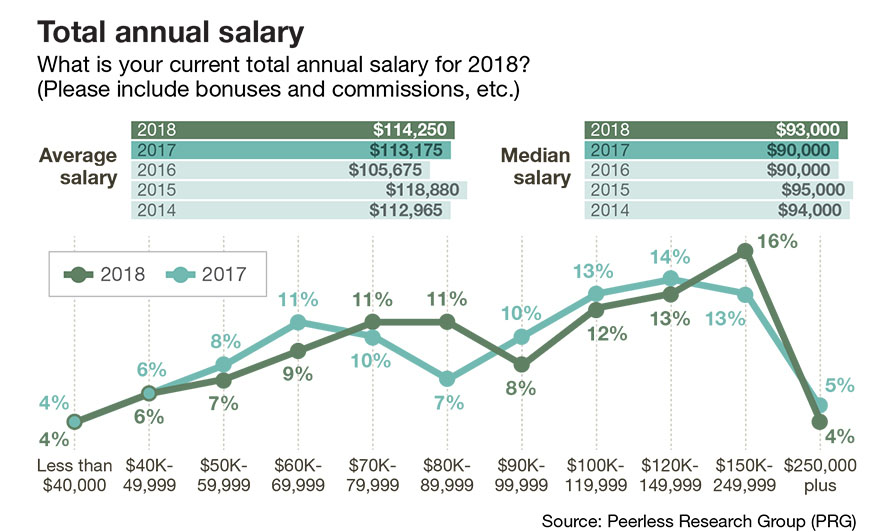
Respondents reflect
The extent to which managers are tasked with more duties than ever before was also explored in our research. As we do every year, we ask survey respondents to share anecdotes and real-life stories with us about their jobs and discovered that responsibilities have indeed broadened considerably.
Brian McGowen, manager of logistics and distribution for The Metal Ware Corporation in Two Rivers, Wis., says that he’s now charged with anticipating and mitigating risk at every juncture of the supply chain. “We manufacture electric cooking appliances which are often shipped on a time-definite schedule,” he says. “So we’re always solving problems and helping our customers avoid bottlenecks. There’s never a dull moment.”
One recent example of this, recalls McGowen, was when traffic congestion at Vancouver kept a large shipment stalled on the highway. By quickly diverting and “dead-heading” the load down through the Port of Long Beach, he saved the client time and undue penalties.
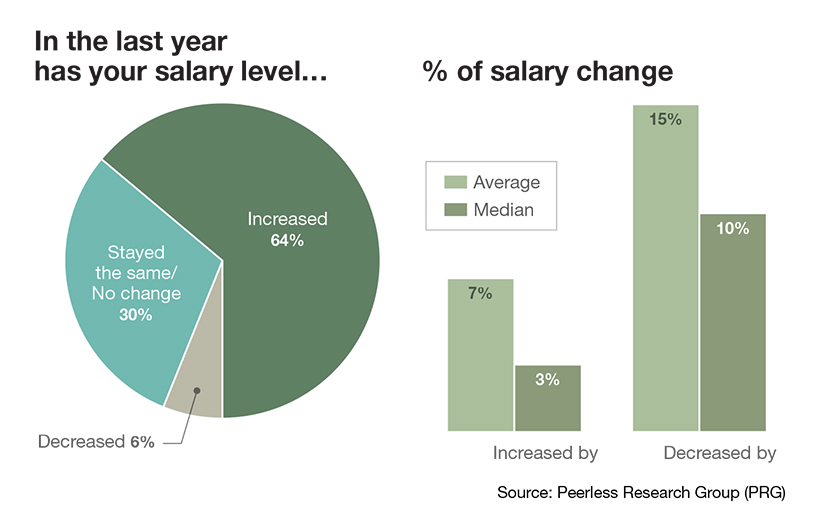
Far from resenting the added dimensions of his job, however, McGowan finds the new challenges stimulating and satisfying: “And when the day is done, you go to bed knowing where your hat is hanging,” he adds. “You can rest easily.”
David D. Gifford, the logistics manager for Watson Engineering in Piedmont, S.C., also notes that over the past ten years his duties have “moved outside of the parameters” of the original role. “We’re a full-service sheet and tubular metal fabrication company, so that means I’m not just moving goods now,” he says. “Now
I’m charged with purchasing and releasing them too. Every day brings
a fresh challenge.”
Which is a good thing, adds Gifford. However, he’s concerned about the lack of a “succession strategy” necessary to attract a new generation of logistics experts for the future. “Here in Piedmont, there are plenty of other industries competing for new talent,” he says. “This region is booming, and companies are offering salaries above $50,000 at the entry level.”
Martin Kusy, logistics supervisor for Nautel Limited in Hackett’s Cove, Nova Scotia, also says that his job “has changed in scope” over the past several years. His company manufacturers and ships AM/FM radio broadcast transmitters, navigational radio beacons and differential global positioning system transmitters.
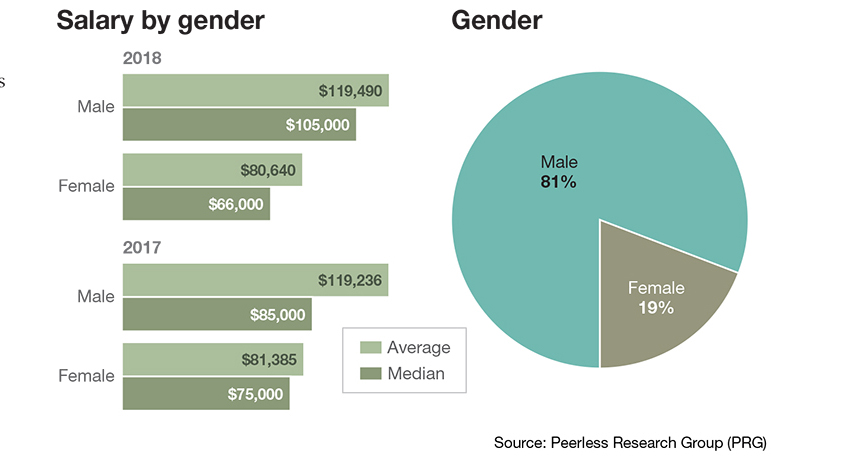
“Managing logistics at our headquarters is a fast-paced environment,” says Kusy, “and you have to be willing to reinvent solutions to keep up with new demands in coordinating international freight.” Tracking inventory and creating new strategic plans for accounting and billing issues have been made part of his job, he adds. But that’s just “goes with the territory” of the new business culture.
“And we have to be ready for more change as the Amazon model gains more appeal,” adds Kusy. “We are aware that e-commerce is going to place even more demands on our logistics function in the coming years, and our company expects us to adapt.”
Mentoring job prospects before they graduate from college is “crucial” for Joe Bardowski, vice president operations, for The Viking Group, a manufacturer of fire sprinkler systems for independent contractors based in Hastings, Mich. “We recruit from the top schools in the region,” he says, “including the University of Michigan. I help educate young people through internships to learn the fundamentals.”
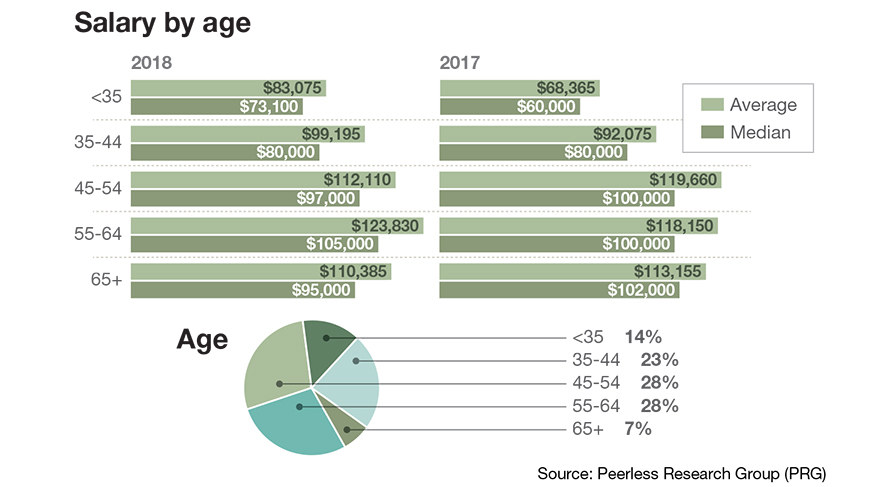
According to Bardowski, these fundamentals have expanded to include support for the shipping and carrier base, and even managing “Uber-like” partners in the gig economy. “E-commerce is not yet having much of an impact on our business, but when it does, we’ll be ready,” he adds.
On-line education advantage
Michael Gravier, associate professor of marketing and supply chain management at Bryant University, took a careful look at the survey and observed that continuing on-line education programs are just as important as social networking and involvement with professional associations for negotiating compensation. In fact, this year’s survey shows that continuing on-line education had the least number of doubters.
“On-line education offers the advantages to students of being self-paced and providing a concrete certificate, where social networking and professional association involvement rely upon faith and intangibles,” says Gravier.
He expects on-line education to not only grow in popularity, but to have a greater impact on “promotability” and salary growth due to its perceived greater credibility. Meanwhile, he feels that professional certifications may be waning in importance. “In terms of improving level of pay or job position, the more important legal knowledge and soft skills become, and professional certifications don’t appear on the list at all.”
Mid-level and lower salaried positions emphasize technical and functional knowledge, as might be expected, and that’s where the professional certifications appear. According to Gravier, this fact is reinforced by the additional findings that professional associations are no longer perceived to have an additional benefit for negotiating compensation over social networking or online education.
“Professional associations and certifications have increasingly become relegated to mid-level and technical roles, a natural consequence of their compliance-based and test-taking approach,” says Gravier. “Yet it begs the question of how sustainable or relevant they will be in the future without the involvement of top industry leaders.”
Avoiding burnout
The field overall sees more logistics managers reaching the top levels of company leadership, but also sees them being expected to do more—and not always being compensated for the extra effort.
Tisha Danehl, vice president of the executive recruitment firm Ajilon in Chicago, made similar observations, and believes that salaries and benefits are about to surge in the near future. “Many companies are left with a dilemma,” she says. “They’re trying to find the right talent with patience and precision, while also filling the jobs quickly enough to reduce costs lost from open positions. As the New Year gets underway, more companies are trying to figure out how to have a successful hiring program in 2018.”
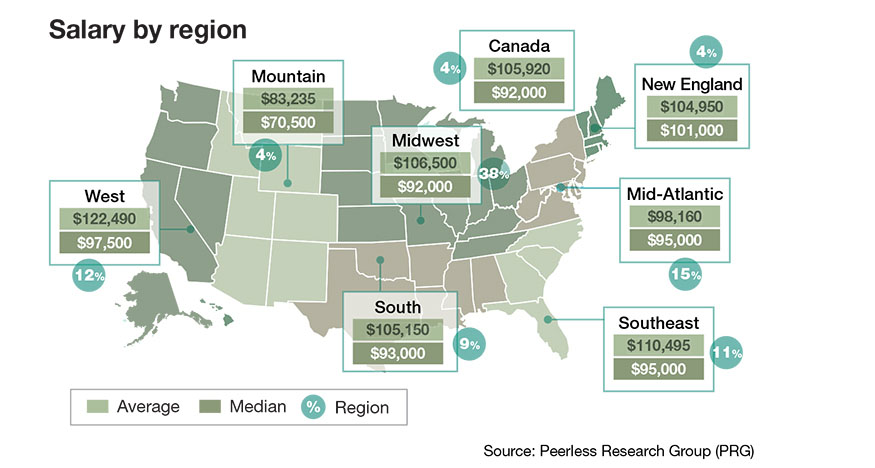
Danehl adds that in order to keep employees up to speed with new job duties, it’s important that employers have on-the-job training programs for everyone. She believes that not only will this elevate the quality of work being done within the organization, but regular employee professional development also helps with employee retention.
“It’s striking that only 19% of this year’s respondents were women—sadly we’re seeing the supply chain industry continue to struggle to recruit and retain top female talent at every level,” observes Danehl. “This in part comes down to a variety of factors. For one, the supply chain industry has been traditionally thought of as more of a manual labor job, but the career path is becoming more white collar as time goes on.”
Additionally, says Danehl, men are frequently in positions of power within organizations, and an unconscious bias in favor of men still exists. However, if companies can start looking to women earlier—from the first years of college—then the number of women entering the industry can dramatically increase.
“The industry needs to look at solutions that fit for the long-term to ensure that in 15 years, when this survey is done, there will be a more balanced representation,” says Danehl.
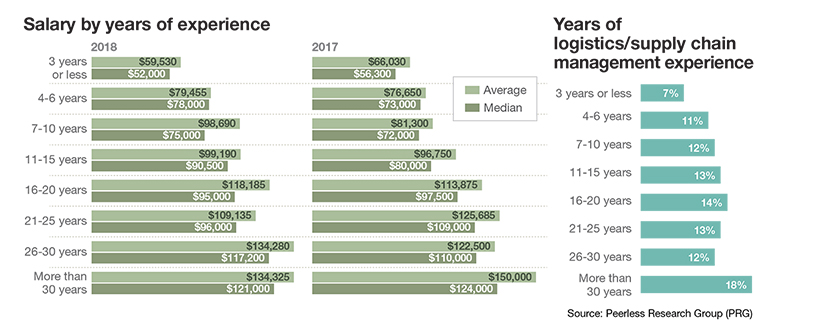
Uneven compensation
Rosemary Coates, executive director of the Reshoring Institute and President of Blue Silk Consulting, notes that the difference in the average salary between men and women in the field is “disappointing,” but hardly a lost cause. Along with Danehl, she explains that part of the pay disparity is due to a needed underlying shift in the industry.
“Fortunately, many companies are more aware of the gender shortcomings, and they’re doing more to address the issue,” says Coates. “For companies seeking to be proactive on fixing the gender gap, I strongly recommend tapping one of the talented women within your company to get their help in formulating a plan that will attract more women to the organization. This should include promoting flexible working hours for young mothers along with maternity leave.”
The organization Achieving Women’s Excellence in Supply Chain Operations, Management & Education (AWESOME) believes that things are indeed getting better. Their 2018 symposium next month is titled “The Year to Make a Difference.” At the same time, the new AWESOME/Gartner “2018 Women in Supply Chain Survey” will be released with analysis provided by Gartner’s vice president of research, Dana Stiffler.
In 2016, AWESOME and Gartner set out to establish a baseline with retail and manufacturing companies. In 2017, the goal of the survey was to assess progress, as well as to collect key data on goals and initiatives, some of which are yielding benefits, some not.
“This year’s survey was expanded to include companies that provide logistics services integral to supply chain, such as third-party transportation and logistics, consulting, and technology providers,” explains Stiffler. “Our findings should reflect greater awareness for the need to make a difference and gain a competitive advantage by improving compensation and other benefits.”













